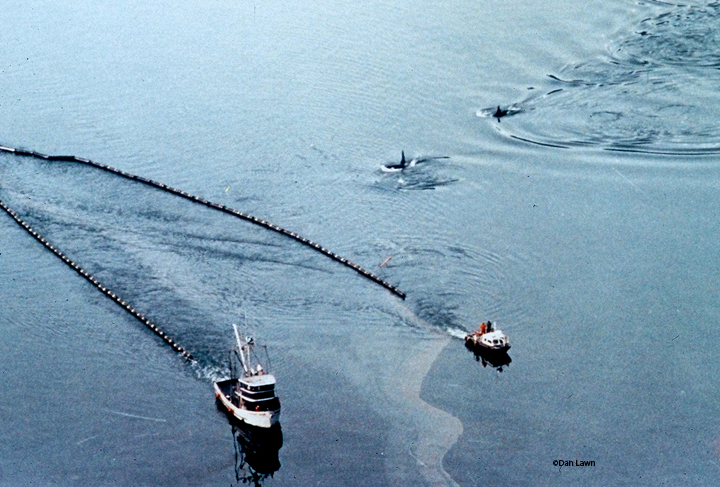
Exxon Valdez anniversary it is unlikely that we will see another 25 years go by before we have another catastrophic oil spill
This month there are two significant anniversaries to acknowledge – the birth of the internet and the death of thousands of animals in Prince William Sound, Alaska due to the Exxon Valdez oil spill. Needless to say there is far more to celebrate about the internet (other than the 1000’s of misplaced hours spent) than this spill. However, there are two positive outcomes associated with the spill: first, Prince William Sound is now home to the safest oil tanker transport system in the U.S. due to a robust double tug escort system, enhanced oil spill response capabilities and a well-funded citizen advisory council as insurance against complacency; in addition, all U.S. waterways have benefited from the passage of the Oil Pollution Act of 1990 by Congress the year after Exxon’s indelible moment on March 24, 1989. These benefits include double hull oil tankers and barges, increased liability for spilling oil and the creation of the Oil Spill Liability Trust Fund, which assures funding to respond to an oil spill even if the spiller is insolvent or unknown.
Our current and more difficult challenge is to instill the appropriate oil spill protections proactively rather than in response to these disasters. Having had the privilege of studying the now endangered southern resident community of killer whales in the waters between Washington State and British Columbia (Salish Sea) for my graduate research at the University of Washington nine years prior to the Exxon Valez oil spill, and having participated in the damage assessment on humpback whales the year after the spill, I became keenly aware of what’s at stake. This experience was enough to cause me to realize I had to do more than just study the whales if there were going to be whales at all in the increasingly commercially congested waters of the Northwest.
So here I am after 25 years of being a true blue-greenie dedicated to reducing ship-based pollution still focusing on oil spills. I continue to concentrate on Washington waters for which I have great familiarity and affinity. I’m based on a live a board in Seattle and have a cabin in the San Juan Islands from where I can observe the ever increasing vessel traffic bound to and from Canada’s largest port of Vancouver. Vancouver receives as much traffic as the Ports of Seattle and Tacoma combined, making the Strait of Juan de Fuca, which serves traffic bound to both countries, amongst the top three busiest waterways in North America.
Fortunately, these waters have been mostly spared from any large oil spills that could devastate Puget Sound and squander the millions of dollars being spent on Puget Sound restoration and recovery. This lack of serious oil spills is not just a result of dumb luck (though that remains our greatest response asset) rather years of public pressure, political leadership and industry practices. However, the forethought the late Senator Magnuson exercised to restrict the size of oil tankers and number of refinery docks allowed in Puget Sound, in response to the opening of the Prince William Sound Port of Valdez in the late 1970’s, deserves renewed attention as numerous new port developments in Washington and British Columbia threaten to wreak havoc with our admirable spill record.
I worked on behalf of Friends of the Earth in collaboration with several groups in Washington State to estimate the number of additional oil tankers, barges and cargo ships that are likely to be plying Washington waters as a result of the various new oil, coal and cargo terminals proposed for Washington and British Columbia. The following infographic shows that we are likely to see an additional 1347 ships in Juan de Fuca Strait (21%), 314 additional ships (383%) in Grays Harbor, and an additional 2172 ships (153%) on the Columbia River. Many of the additional 3,833 vessels are likely bound to ports in Asia that have a growing appetite for fossil fuels. This trend will only increase if the oil industry succeeds in convincing the Obama Administration to lift the export ban on crude oil that is extracted in the U.S.
It would be sadly ironic if the export ban was lifted in the 25th anniversary year of the worst oil spill to besmirch Alaskan waters and the worst in the U.S. until the BP gusher in the Gulf in 2010, for every ship leaving Northwest ports bound for Asia would have to transit through one of the most ecologically rich and navigationally challenging waterway’s in North America know as Unimak Pass. The Pass is a narrow gap in the Aleutian chain separating the Gulf of Alaska and the Bering Sea. It has been referred to as the Galapagos of the north for its wealth of wildlife. Not only do all the ships following the Great Circle Route transit the Pass, so do the gray whales and numerous other migratory species along the coast. Friends of the Earth is currently involved in the ongoing risk assessment for the Unimak Pass region which began after another ship – the Selendang Ayu – grounded resulting in the death of six of the ship’s crew and a 336,000 gallon oil spill. Take a look at a blog post on the threats to the Aleutians by John Kaltenstein for more details.
Regardless whether the U.S. crude export ban is lifted, both Unimak Pass and Northwest waters are under a continued and expanding threat of oil spills due to growing vessel traffic. This is due in large part to Canada’s development of the Alberta tar sands – one of the largest and most toxic oil deposits in the world. While most of the country has been focused on the Keystone XL Pipeline connecting the Alberta oil fields with Texas refineries, there are two other proposals to bring that oil to the Pacific coast for easy export to Asia that has invested heavily in the tar sands oil fields. Of greatest concern to me is Kinder Morgan’s proposal to triple the volume of oil currently flowing through its Trans Mountain pipeline that already connects Alberta to Vancouver. The other is Enbridge’s proposal to build a new line between Alberta and Prince Rupert that brings tar sands oil another day closer to Asia on its way out of the Northwest.
Kinder Morgan’s permit application indicates that if there is a spill from one of the (at least) 348 tankers expected to be exporting tar sands from its expanded pipeline in the area considered most likely for an accident, there will be a 95 percent probability that oil will be present throughout Haro Strait and will end up on the beach adjacent to my cabin on San Juan Island. More importantly, if the spill occurs anytime from the spring to fall endangered orcas will likely be present. Due to their tendency to travel in groups (pods), NOAA determined that an oil spill is one of the primary extinction risks for this population. The two orca populations in Prince William Sound observed in oil during the Exxon Valdez oil spill still have not recovered.
However, Kinder Morgan claims that the likelihood of such a worst case spill occurring is once in 2,500 years. In contrast, a recently released study by professors from George Washington University and Virginia Commonwealth University on contract to the Puget Sound Partnership, found that there was about a 12-fold increase in the volume oil transported through this area and about a sixfold increase in potential oil losses in the same Haro Strait region due to just the Kinder Morgan pipeline expansion alone. If you consider all the proposed export projects for the Salish Sea cumulatively there is a 375% increased risk of oil spills as compared to 2010.
Whether it has been vigilance, leadership, luck or some of each, we have been fortunately spared the nightmare of a catastrophic spill in the Northwest. It will require continued external public vigilance along with sustained prevention efforts combined with additional risk mitigation to preserve that record while industry proponents continue to promote fossil fuel export terminals.
Photo Credit: © Dan Lawn
Related Posts
Ways to Support Our Work

Read Latest News
Stay informed and inspired. Read our latest press releases to see how we’re making a difference for the planet.

See Our Impact
See the real wins your support made possible. Read about the campaign wins we’ve fought for and won together.

Donate Today
Help power change. It takes support from environmental champions like you to build a more healthy and just world.